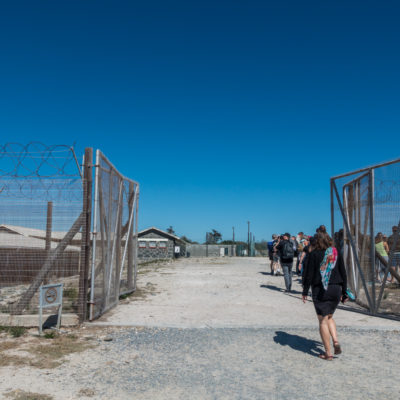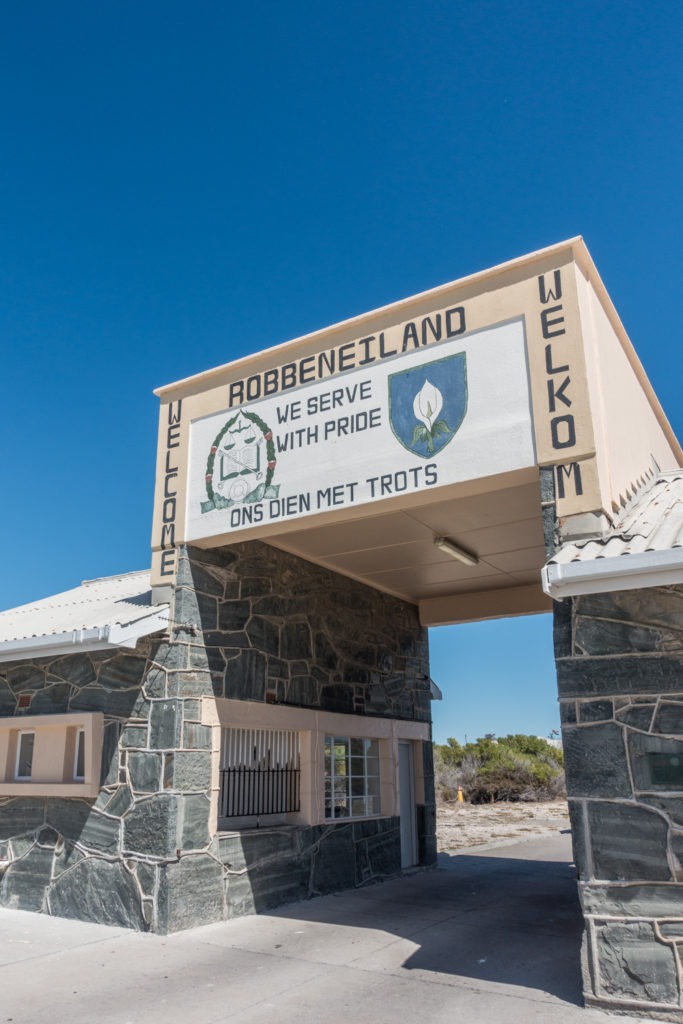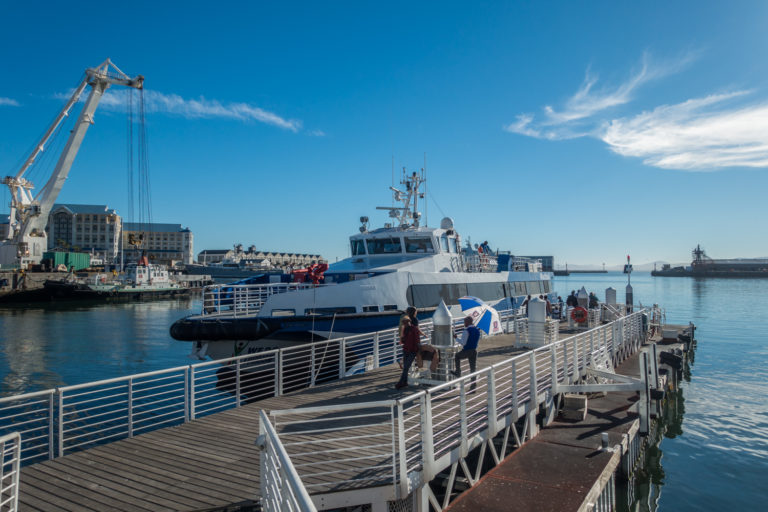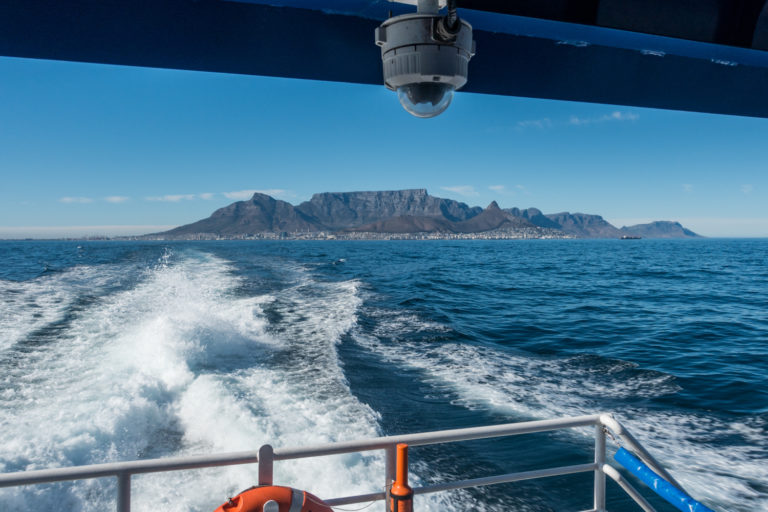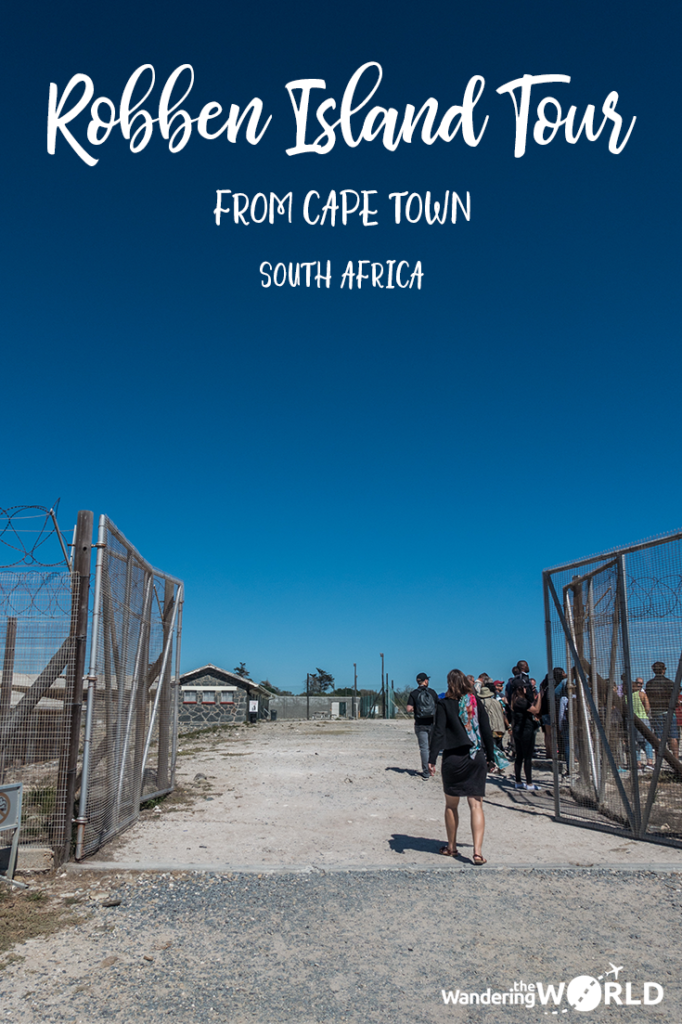While a trip to Robben Island used to be feared, it’s now a major tourist attraction in Cape Town. Tons of visitors are transported to and from the island daily for a half-day tour of the former high security prison.
Did you know? Robben is Afrikaans for seals.
Robben Island History in short
While most people know Robben Island for its most famous prisoner, Nelson Mandela, the island has been used for various purposes by different occupants. It used to be inhabited by just penguins and seals, before it served as a military defensive site, a medical institution (for lepers among others), and a replenishment stop for sailors.
However, throughout its history, Robben Island has mostly been a place of banishment and imprisonment. Regular criminals, military prisoners, and people fighting the colonial and apartheid rule have all served time here.
The latest involuntary occupants of Robben Island where the political prisoners fighting against apartheid. Nelson Mandela was one of them, spending 18 years in the Maximum Security Prison that was active on Robben Island from 1961 to 1991.
Now Robben Island is a National Heritage Site as well as a UNESCO World Heritage Site, symbolising the triumph of freedom and the human spirit over adversity, suffering and injustice.
How to get to Robben Island
If you’re looking to visit Robben Island, you can do so by taking the ferry from Cape Town. It runs daily at 9:00, 11:00, and 13:00 (in summer at 15:00 as well), departing from the Nelson Mandela Gateway, a three story glass museum on the V&A Waterfront. Besides being the passenger ferry terminal, it houses exhibition areas, an auditorium and a museum shop as well.
You are asked to arrive no later than 30 minutes prior to the scheduled times of departure. Before you can board, you have to go through a security check and get your photo taken (which you can buy later). Boarding gates will close 10 minutes before departure.
Note that the ferry rides are weather and demand permitting. Check the Robben Island Museum website for live weather and warnings of cancellations.
Robben Island Museum Tour
Arriving on Robben Island, you’re expected to board one of the waiting busses for a tour along the historical sites on the island. During the ride, a knowledgable Robben Island Tour Guide will tell you all about the island’s history and the sites you’ll pass.
The different sites on Robben Island
There are several landmarks and points of interest spread over Robben Island. We’ll cover some of the most interesting ones here. For more information, we recommend doing the Robben Island Museum Tour.
Robert Sobukwe's house is one of the points of interest on Robben Island. Sobukwe was the leader of the PAC, an organisation opposing apartheid. He was held in solitary confinement because he was deemed more radical and dangerous than the other political prisoners.
Political prisoners were forced to work up to 8 hours per day in the Limestone Quarry, which they used as their university. The professors learned the illiterates to read and write, and teached them things like history and math. Their motto: each one teach one. This applied to both prisoners and wardens. Because of this remarkable initiative, people left Robben Island literate and with a different mindset.
Another impressive sight on Robben Island are the gun emplacements from World War II. These massive guns are built in the ground, and very accurate. They were only used for practice shots, and are now the only ones in the world in this good a state.
The bus tour ends at the Maximum Security Prison, where they held the political leaders in separate cells. An ex-prisoner will give you a tour through the building, talking about what a regular day in prison looked like. Definitely the most intense part of the tour.
You’ll get a chance to see Mandela’s cell as well, but it is now closed after someone stole his spoon.
Robben Island Tickets
Robben Island Museum tickets can be bought online through their website, or at the Nelson Mandela Gateway. General tour tickets cost R360 (~ $26 ~ €23) per adult, including the ferry trip to and from the island, the bus tour on the island, and the tour through the Maximum Security Prison. Private tours are available as well, and can be arranged by contacting the staff of the Nelson Mandela Gateway.
These tickets tend to sell out (especially in high season), so it’s advisable to buy your tickets beforehand. Do note that you buy a ticket for a certain day and hour, and changes are subject to an administration fee. Of course, when your tour is cancelled, you will get a refund.
Robben Island Tour – Our Experience
On the morning of our tour, Brecht checked the Robben Island website for a possible cancellation. They had a warning up that all boats were cancelled due to windy weather until further notice. Just to make sure we had the staff from our hostel call to check. Luckily, because the ferry wasn’t cancelled after all. Guess that was a notice from the day before.
We took an Uber to get from our hostel to the V&A Waterfront, which took us just over 10 minutes. A short walk, a security check and a quick smile for the camera later we were boarding the ferry to Robben Island. It left the dock with a small delay at 9:10.
During the ferry ride, which took about 25 minutes, a Cape Town promotion video played for our entertainment. If you can peel your eyes of the screen, do check out the view over the real Cape Town from the back of the boat. It’s pretty impressive! If you didn’t bring any snacks or drinks, you can buy some at the small shop on board.
After crossing Table Bay, we stepped foot on the island, not sure what would happen next. We followed the moving crowd to the waiting busses that would take us on a bus tour over the island. Our Robben Island Tour Guide was very knowledgable and a great storyteller. He made the tour interactive by asking questions and pointed out wildlife on the island.
About 1 hour into the tour (it was about 10:35 by now), we stopped for a 15 minute toilet break. There was a shop as well, where you could buy cold drinks and some food like sandwiches and muffins. We really liked the (huge) caramel fudge muffin!
During the tour, we were sitting on the left hand side of the bus, but it seemed like the right hand side had the better view most of the time. Maybe something to remember when you’re boarding a Robben Island Tour Bus?
The Robben Island Museum Tour ended at the Maximum Security Prison, where we got a 45 minute tour through the complex. From there we had to walk back to the jetty, where a boat was waiting to take us back to Cape Town. Our tickets were scanned again and we passed a souvenir shop before boarding the ferry.
Not all tour busses arrive back at the same time, so it’s possible you have to wait for the ferry to fill up. As one of the last people to board, we only had to wait about 10 minutes for the boat the leave. Unfortunately we boarded a slower boat (called Jester) than the one we arrived on, as it took us nearly an hour to get back to Cape Town.
Allow for about 4.5 hours for the Robben Island Tour. That’s how long we we were away for, starting from the moment we entered the ferry terminal on the V&A Waterfront to when we got back there. Of course the total time depends on how long the ferry ride takes and how long you like to souvenir shop (we don’t).
Cape Town has a couple of activities you can’t skip, and the Robben Island Tour is one of those, if you ask us. You’ll learn a lot about the fight against the apartheid regime, and the struggle of its political prisoners, all part of South Africa’s history. Have you been yet or is Cape Town still on your bucket list? How was your experience? We’d love to read about it in the comments!
Robben Island Tour in short
What? Tour of a former political prison
Duration? About 4 hours, including the ferry ride
Price? R360 (~ $26 ~ €23) per adult
Book? Robben Island Museum website
Bring? Camera, water, sunscreen
Good to know? Right hand side of bus has the better view most of the time
Like it? Pin it!
Did you find this post helpful? Help us spread the word by sharing this post or pinning the following image.


